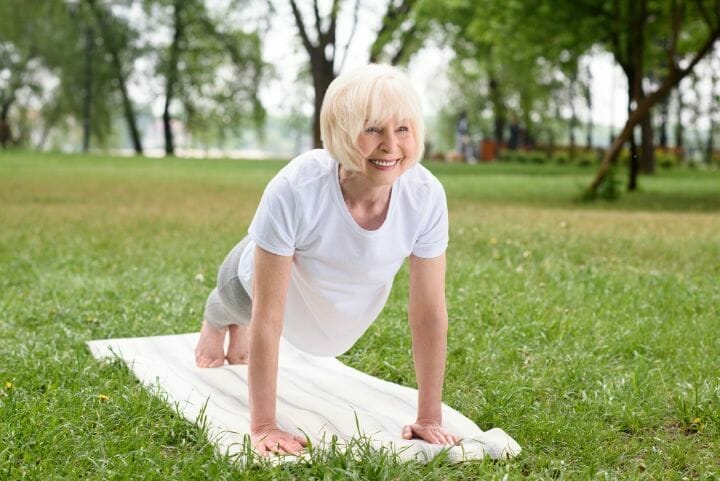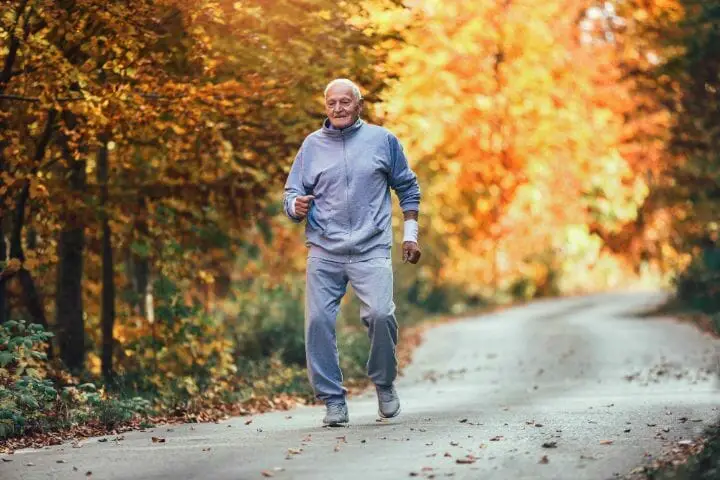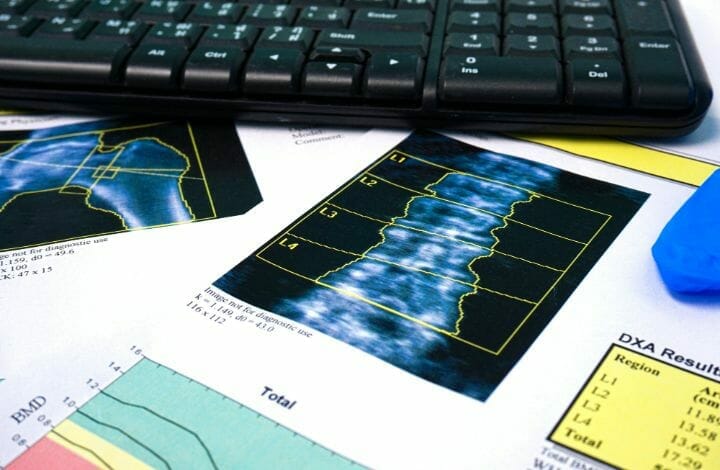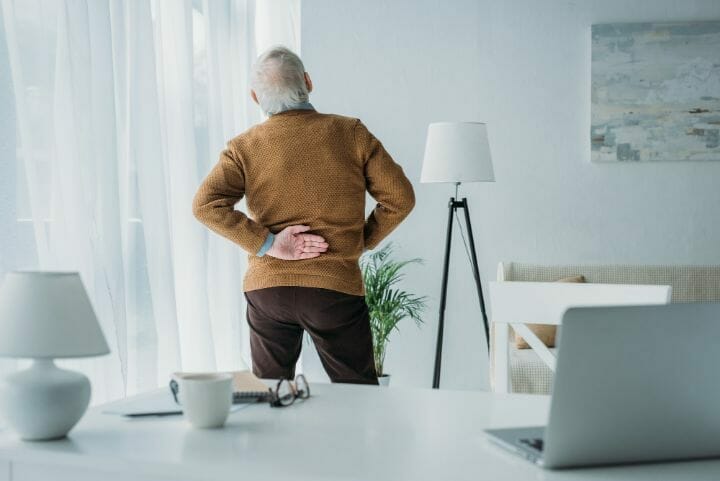Osteoporosis causes a decrease in . In a person with osteoporosis, the body absorbs more and does not produce enough to replace it.
This decreases their and , leading to and a higher for . Osteoporosis develops slowly and silently, meaning that you may not even know you have this until you get a or worse.
The key lies in early diagnosis of the and a healthy diet plan combined with like Tai chi for osteoporosis.
The internal structure of a consists of small spaces, like those of a honeycomb. However, the bones of those suffering from osteoporosis, the bones increase the size of the porous holes, causing the and the to decrease. Additionally, the outside of the becomes more fragile and thinner.
Contents
Factors Causing a Higher for Osteoporosis
Osteoporosis is a disorder that can occur in people of any age, race, and color.
However, it is more common in adults, especially women.
- Family History: Having a family history of osteoporosis can increase your likelihood of developing osteoporosis.
- Lifestyle factors: Smokers and people who consume alcohol heavily. Also, a sedentary lifestyle where you get little or no exercise is detrimental to .
- Being small-framed or thin: Thin people and those with small frames are more likely to develop osteoporosis.
- Inadequate Nutrients: A diet low in foods containing and .
- Certain medical conditions: Some medical conditions, such as hyperthyroidism or hyperparathyroidism, put you at for osteoporosis.
- Medications: Several medicines, such as corticosteroids used for long periods, cause thinning.
Other risk factors for osteoporosis may include:
- Being of European and Asian ancestry- the chances of osteoporosis is higher among people of these races.
- Restrictive dieting and eating disorders.
- Menopausal Woman: After menopause, eprotect women from
People suffering from osteoporosis are at a high risk of bone fractures or broken bones, even while doing routine activities like standing, running, or walking.
The most common osteoporotic fractures that occur include hip fracture, vertebral fracture, bone fracture of arms, limbs, wrist, knees, etc. In case the bone breaks in the spinal vertebrae, it could lead to changes in posture and changes in the curvature of the spine. A decrease in height is also a common sign of osteoporosis in the spine.
A set of can help people with and maintain . Likewise, osteoporosis patients who are at an of and loss of will need to incorporate some changes into their lifestyle to lead a relatively normal life.
These can minimize the increased and combat back and hip pain due to osteoporosis. It can also help in improving and .
Here is how:
:
Being active helps minimize and builds stronger muscles to support the body, minimizing the of fractures. However, a regular exercise regime may not be suitable for osteoporosis.
Weight-bearing exercises, isometric exercises, and Yoga seem to be most suited to people with osteoporosis.
Weight-bearing exercises such as walking, climbing stairs, dancing, and playing tennis force you to work against gravity. This causes to develop, and it makes the bones stronger.
Working with weights also helps in increasing , , and overall . Brisk walks, jogging, and running also help with overall . is undoubtedly the best method to improve .
You may also like Intermittent Fasting and Osteoporosis
:
Getting an adequate amount of and is necessary for the functioning of and . Adequate levels of and decrease the risk of osteoporotic fractures. Fish like tuna, mackerel, and salmon are rich in . Eggs, cheese, orange juice, and beef liver, etc., are also good sources of and .
Tips for daily living
In your home:
- Avoid hunching over and bending to pick up things.
- Get in and out of bed carefully. To get in, first sit on the edge of your bed. Then lie on your side and gently roll over onto your back.
- To get out of bed, lie on your side, ease yourself to the side of the bed, then push yourself up with your arms so that you are in a sitting position at the side of the bed with both feet on the floor.
- Avoid reading in bed. To read comfortably, sit in a chair, place a firm pillow on your lap, and support your arms and book on the pillow.
- While sitting, keep your chin tucked in and neck straight.
- Raise your feet on a low stool while sitting on a couch, keeping your knees bent.
You may also like Does Osteoporosis Affect Teeth and Nails?
Living Well with Osteoporosis of the Spine
Around 55% of people aged 50 and above have osteoporosis or reduced . Many elders have a tough time getting back to performing even simple activities like getting up from their bed. However, death from osteoporosis is not inevitable. It is possible to live a healthy, cheerful life with certain measures:
Exercise
, Yoga, resistance training, and isometric exercises for osteoporosis are highly recommended for patients with osteoporosis.
for
is a major building block of . gives its hardness and is very important for . Women aged 50 and above need to be wary of .
They need 1,200 milligrams of a day. Men of 71 and above also need a total of 1,200 milligrams daily, according to the National Osteoporosis Foundation. High- foods like milk, yogurt, cheese, or -fortified citrus juice or cereal should be a part of a healthy diet plan for osteoporosis.
You may also like Difference Between Osteoporosis and Osteomalacia
Preventing Falls With Osteoporosis
- Walk around your home and take stock of the potential tripping hazards. These could be unraveled yarn from throw rugs, curtain cords, and dangling electrical wires.
- Keep hallways and bathrooms well lit
- Install safety handles on the bathtub.
- Ask someone else to retrieve hard-to-reach items or place items within reach.
Tests for Osteoporosis
This is both a preventive measure as well as to your doctor about when and how often you should get a and take -building .
Spinal Fracture
A spinal is considered a serious orthopedic injury.
Spinal fractures, require time to heal, and these shall be painful for a period of approximately six to eight weeks. This shall enable the patient to return more quickly to the activities of daily living.
A physiotherapist who is a specialist in osteoporosis and trained in rehabilitation and physical therapy is your best bet for a smooth recovery from a . They can help in the management of pain associated with fractures while helping individuals improve posture and mobility.
Spinal fractures can lead to changes in posture. Spinal fractures can cause a stooped, bent, or forward-leaning posture called. This is termed kyphosis. A forward-leaning, hunched posture could lead to an array of problems, including difficulty breathing and poor balance.
Poor balance can lead to falls. Falls and minor incidents are the most common reason for of the spine, wrist, and hips. The cause of kyphosis in adults most commonly is due to from osteoporosis.
Osteoporosis weakens the vertebral bones in the spine and their , the vertebrae are at a higher risk of .
Good postural is important for those with and the issues caused by . Poor posture hinders the balance of the body as well. This is how those with , , and are at a higher risk of trauma to the spine.
You may also like Apple Cider Vinegar and Osteoporosis – A Complete Guide
Causes of Osteoporosis of the Spine
The bones in the body are in a constant state of renewal. A is made while the is broken down. At the earlier stages of life, the body makes faster than the breakdown process of the and the also increases.
Most human beings reach their by 30 years of age. With time and age, the is lost faster than it is created.
is sort of inherited and varies by ethnic group as well. The greater the , the more shall be saved ‘in the bank,’ and the less likely is the possibility of developing osteoporosis with age.
You may also like What is the Difference Between Osteoarthritis and Osteoporosis?
Treatments to reverse kyphosis
Treatment of kyphosis mainly depends on the age and the severity of the condition. Non-surgical treatment may help in strengthening the back muscles and rectify the deformed posture. Standard non-surgical treatment for kyphosis ideally includes pain and osteoporosis that promotes strengthening and improves . , , and Omega 3 fatty acids are also essential for spinal health.
to have a regular life with osteoporosis of the spine: Certain lifestyle habits can affect , , and tissues. Changing these habits can undoubtedly reduce the risks associated with osteoporosis of the spine:
Alcohol consumption: Alcohol does not bode well with the medications prescribed for osteoporosis. It is better to avoid alcohol altogether.
Smoking and consumption of tobacco: There are several studies that show that tobacco weakens the bones. Thus, the risk of osteoporosis is higher with the regular consumption of tobacco.
A well-balanced diet with vitamin D and calcium along with regular physical activity can certainly minimize the risk of fractures in the spine. A few small changes can certainly make the patient lead a normal life despite having osteoporosis.
We hope that the information provided in this article has been useful to you. Drop your comments about how you have managed the effects of osteoporosis here!





